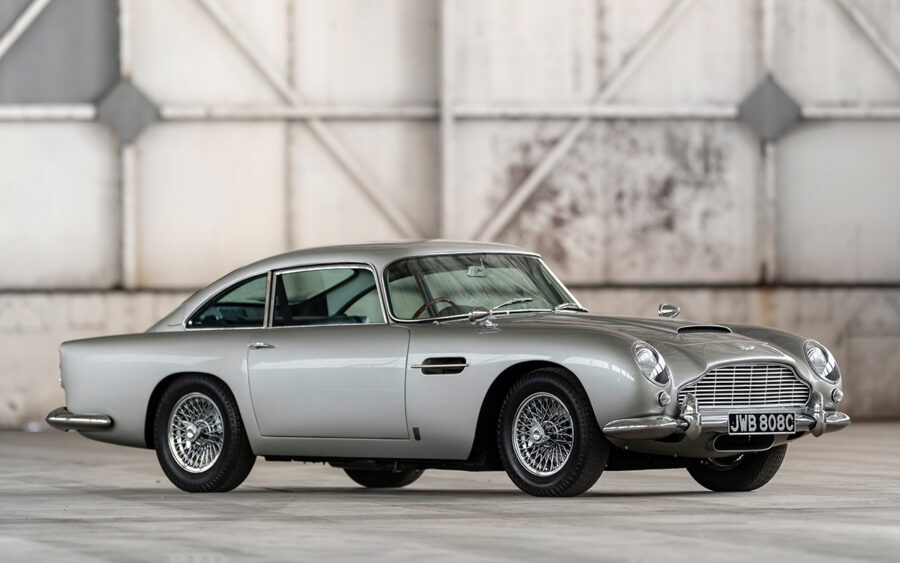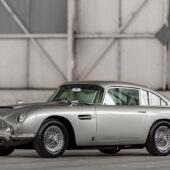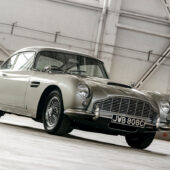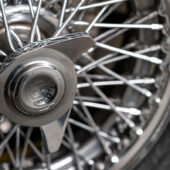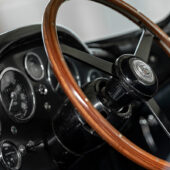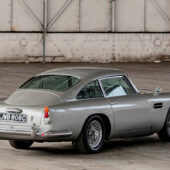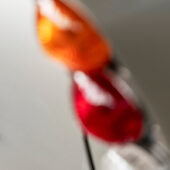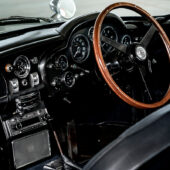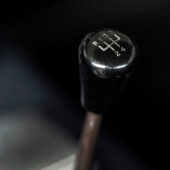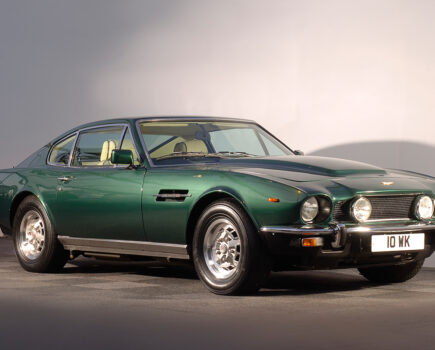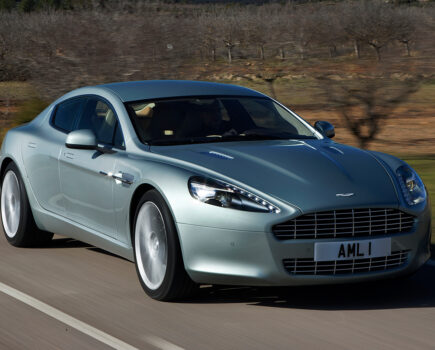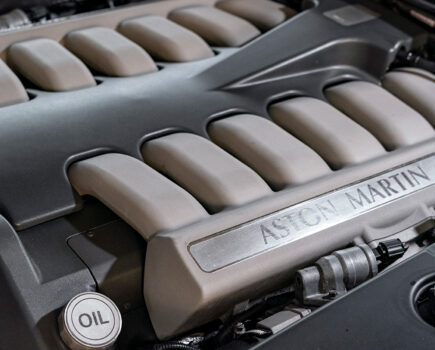The Aston Martin DB5 was a cautious evolution of the DB4 Series 5, buoyed by James Bond’s endorsement and hard-won lessons in the marketplace
Words: Jon Burgess
Aston Martin’s fortunes had improved markedly by the time the DB5 arrived – but the call from Thunderball and Goldfinger’s makers, EON Productions, did the DB5 no harm whatsoever.
More than 1100 DB4s had been sold across five series of cars; despite the fewest produced in period, it was the DB4 Series 5 that formed the basis for its successor, although the earliest DB5s did not carry model badges.
The new car retained the DB4 Series 5’s body, but a larger 4.0-litre iteration of the Marek six was fitted as standard. Kerb weight had ballooned when the body was enlarged, and to maintain expectations of performance, the Lagonda Rapide’s engine was brought back. The unloved saloon (of which fewer than 60 were built) was somewhat under-carburetted; switching from twin Solex PH44s to twin two-inch SUs helped the bigger unit breathe, and hard-won improvements from the DP215 race programme resulted in a strong 282bhp power output.
Touring, whose licensed jigs produced the Superleggera body of the DB4, also constructed a convertible from 1963.
The following year saw Vantage upgrades reach the DB5; triple Weber DCOEs replaced the SUs for a peak output of 310bhp. 1964 also saw the death of the David Brown four-speed: from chassis 1340, a ZF five-speeder was made standard. Although an automatic gearbox was offered from the outset, the Rapide’s Borg-Warner Model 8 made a re-appearance, though few self-shifting DB5s were ever sold.
1965 saw the end of DB5 production, but not before two fascinating variants took a bow: the so-called ‘short-chassied’ Touring drophead, which adopted the Volante name for the first time. With split bumpers and TR4 tail-lights, these cars glimpsed the DB6 in detail, if not overall appearance.
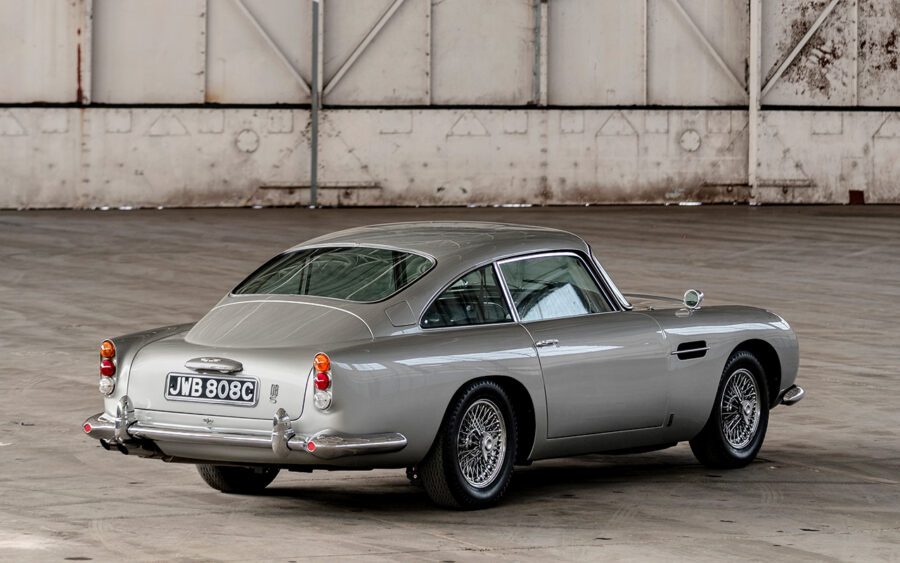
David Brown’s preferences often manifested themselves in special cars; he was the driving force behind the Lagonda Rapide, and his love of four-door saloons (and reviving the Lagonda marque) would later result in a one-off DBS V8, MP230/1, so configured, in 1969. In 1965, however, he simply wanted more room – while the DB4 Series 5 and DB5 were considerably larger than their saloon descendents, his dog, Candy, didn’t easily fit in the latter car.
Coachbuilder, Harold Radford, rushed to Brown’s aid, creating a shooting break that prompted 11 further replicas to be built at enormous cost. These cars were the only DB5s not bodied at Newport Pagnell; technically, at completion, they already had been, but underwent further surgery at Radford’s London facility so as not to disrupt saloon construction.
Of course, one fictional character is synonymous with the DB5, and talk of one cannot proceed without the other. The literary James Bond, Ian Fleming’s secret agent, had canonically stated a preference for a Feltham product over a Crewe one, despite preferring customised Bentleys for his own personal conveyances.
In Goldfinger, the book, Bond picks a DB Mark III from the MI6 car pool; for his screen outing, played by the late Sir Sean Connery, producers wanted him in a more current Aston, specifically, a DB4 Zagato.
Such were the Zagato’s scarcity and fragility that Aston Martin dissuaded special effects supervisor John Stears and production designer Ken Adam from using one; with the DB Mark III old hat, and the DB5 coming on stream, it was agreed that two examples of the new car would be lent to the new production – one for close ups, the other for the second unit to festoon with working examples of the gadgetry for which Bond is now famous.
Technically, the gadget car, DP216/1, had begun life as a DB4 Series V Vantage; a well-used development car, was originally Dubonnet Red before a hasty respray in the now-iconic Silver Birch. It also donated its now-infamous British registration, BMT 216A, to the Bond filmic canon; in Goldfinger, it’s one of several alternative marks that flip round mechanically. The other car, a production DB5, originally FMP 7B, naturally became BMT 216A for close-ups.
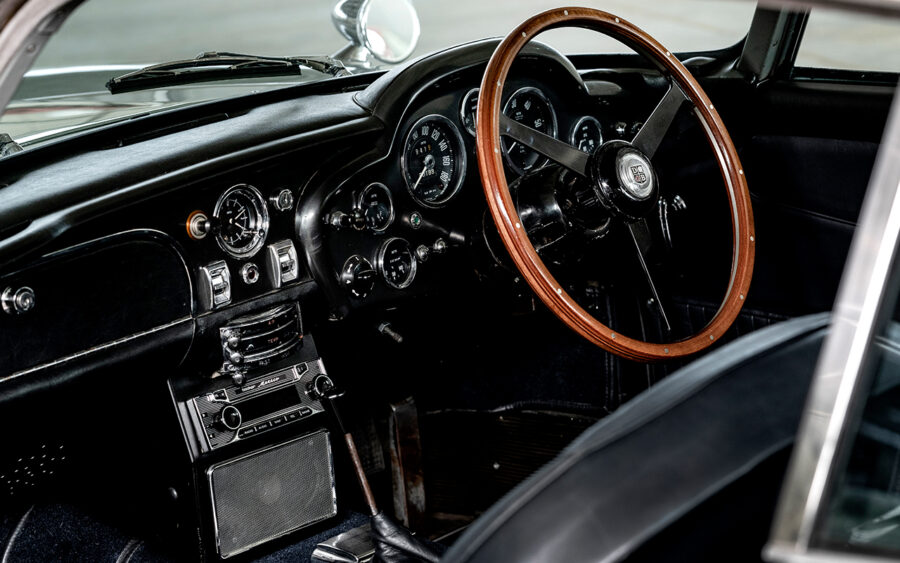
Response to the car – and Aston’s ascension to that of a household name – was immediate. Goldfinger paid its budget back in two weeks; two replica cars, for worldwide tours were built; Corgi rushed a scale model to production, based first on its DB4 casting, then another of the DB5 proper, complete with battering rams, ejector seat, plastic wheel spurs, and a bullet proof shield that protected the seated occupants (in scale).
DP216/1 was converted back to standard and sold soon after filming wrapped, while FMP 7B was refitted with gadgets and now lives in the USA. The former car went there too, after being rediscovered in 1986 and sold at auction. Sadly, its disappearance from the Boca Raton, Florida hanger in which it was stored in 1997 remains an open investigation – but rumours circulate every few years that the car has been found, normally in the Middle East under the nose of an unsuspecting collector.
Corgi has since reissued its Bond DB5 in different scales, and Aston Martin Works announced a series of Goldfinger Continuation cars in 2020. Short lived, the DB5’s star continues to burn brightly.
Aston Martin DB5 timeline
1963
DB5 succeeds DB4 Series 5 in July. Like the outgoing car, the DB5 used cowled headlights (first seen on the DB4GT) and a larger body, with a longer roof and reprofiled wings; DB4 Series 5 body retained. Many DB4 upgrades became standard, including Armstrong ‘Selectaride’ dampers at the rear. A larger 4.0-litre version of the Marek six, last seen in the Lagonda Rapide, with triple SU carburettors, fitted as standard; 282bhp quoted. Touring also offers a Convertible model.
1964
Triple Weber DB5 Vantage arrives; quoted power up to 310bhp. Five-speed ZF gearbox standardised with optional overdrive, replacing the David Brown four-speed; automatic gearbox changes to a Borg-Warner Model 8.
Filming begins on Goldfinger, the first James Bond film to feature the DB5 in a starring role
1965
So-called ‘short-chassied’ Touring variant of the Cabriolet released between October 1965 and October 1966 – which uses the Volante name for the first time. These last 37 cars used split front bumpers and TR4 tail-lights, previewing the DB6’s brightwork.
David Brown commissions a DB5 ‘shooting break’ for his personal use, having wanted more room for his dog Candy. An arch shooting break enthusiast, reaction to the car is favourable; coachbuilders, Radford, having built Brown’s car, build 11 other replicas so as not to disrupt saloon production at Newport Pagnell. Converted from complete cars, the work added as much as 50 per cent to the cost of a DB5.
In September 1965, Aston Martin releases the DB5’s replacement – the Aston Martin DB6.
2020
Aston Martin announces a limited run of Goldfinger continuation cars, complete with James Bond gadgets.

